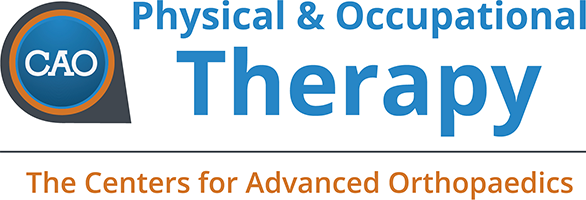Work Hardening/Work Conditioning


Each year, there are close to 3 million unique work-related injuries in the US. When an injury happens during the natural course of one’s work duties, the claim is covered under the employer’s worker’s compensation insurer. The carrier will review each case and, if approved as a claim, an adjuster and/or a case manager will be assigned to the worker. These individuals are responsible for gathering information, tracking progress, and ensuring that the injured worker has access to the resources he or she needed to heal. Physical and occupational therapists play a vital role in rehabilitating these injuries and setting the course for successful recovery. In certain cases, however, injured workers may require a specialized course of rehabilitation to safely return to work at their previous capacity. Work hardening and work conditioning are rigorous, supervised job simulation programs designed to quantify and progress a workers’ ability to operate safely at a given capacity. Injured workers will attend conditioning and hardening programs five days a week: conditioning for 2 – 4+ hours each day and hardening for a full 8+ hours a day. The supervising therapist will re-evaluate the injured worker at regular intervals for strength, repetition, exertion levels, and consistency of effort. The evaluator and treatment team then compares these values against baseline to determine progress and provide a sound, objective basis for safe return to work.
At the Centers for Advanced Orthopedics, we are diligently building an industrial rehabilitation network with convenient locations throughout the Maryland/Virginia/DC region. We understand that quality and access are critical components in getting people back to work and back to life.
How is work hardening / conditioning performed?
Work hardening and work conditioning are typically ordered by the supervising physician and approved by the worker’s compensation adjuster or case manager. Once an individual is identified as a candidate, a qualified therapist will conduct an initial work conditioning or work hardening evaluation. At the Centers for Advanced Orthopedics, we are proud to feature OccuPro, a nationally recognized leader in industrial rehabilitation software and programming. OccuPro provides a standardized platform that can quantify basic movements such as pushing, pulling, carrying, floor-to-waist lifts, and overhead lifts. Repetitive movements such as walking, squatting, crawling, and climbing are also considered. The therapist then gathers information from the worker and the employer to outline the specific requirements of the job. Based on this information, a functional rehabilitation program is designed and scaled to the worker’s baseline levels. The worker is re-evaluated every few visits using the same baseline tests to quantify progress and optimize the program intensity.
Most work conditioning programs last between 1-4 weeks, but the duration will vary depending on the specific job description and individual progress. Work hardening programs often incorporate a multi-disciplinary approach, which can include physical therapists, occupational therapists, vocational rehabilitation specialists, and psychologists. These hardening programs may take more time to ascertain whether the worker has reached an appropriate return to work threshold.
In both cases, the approach is comprehensive and will include strengthening, flexibility exercises, cardiovascular conditioning, spine and joint stabilization exercises, and job simulation. Clinics that offer work conditioning and work hardening often have specialized equipment and tools that allow the therapist to simulate real-life work environments. In addition to the complete array of standard physical therapy equipment, many of the Centers’ industrial rehab centers have tires, ladders, fire hoses, sledgehammers, hand tools, gravel pits, and sheet goods such as plywood and drywall. The more resources a therapist has, the more individualized and precise the program becomes.
People in certain work hardening/conditioning programs may progress to transitional work programming by performing job duties at their place of employment. If necessary, final adaptations and/or reasonable accommodations can be determined during this period of transition. Work hardening/conditioning continues until work tolerance and return to work goals have been met or until a plateau in progress is reached.
If this plateau occurs prior to the return-to-work target, the supervising healthcare provider or workers’ compensation carrier may request a Functional Capacity Evaluation (FCE) to make final determinations. FCEs are a valuable diagnostic tool for medical professionals and claims managers to determine what pathway is most appropriate for the injured worker.
What are the benefits of work hardening / conditioning?
Most injured workers can successfully rehabilitate through a typical physical or occupational therapy program. However, there is a limit to how much can be accomplished within this treatment model, and some workers need the repetition and rigor of a work conditioning/work hardening program to safely reach their goals. A few unique benefits of this program design are highlighted below:
- Vocationally specific, supervised care plans
- Work simulation activities build confidence
- Supervising therapists educate and train the worker to use safe and proper body mechanics for a variety of handling situations
- Specialized software quantifies performance, participation, and effort using a validated, standardized approach
- Graded progression with frequent re-evaluations reduces risk of re-injury upon return to work
What are the conditions work hardening / conditioning can address?
Anyone who was injured at work and is struggling to return to their pre-injury functional capacity may benefit from work rehabilitation programs. Often, these workers are in more physically demanding roles, such as police officers, firefighters, electricians, plumbers, corrections officers, mechanics, or construction workers. However, many jobs are considered strenuous simply because of the repetitive demand; as a result, many healthcare providers, painters, delivery drivers, postal workers, chefs, and retail employees may benefit from work hardening/conditioning.
It is important to consider that the specific medical diagnosis or injury is often not a predictive factor in whether a work conditioning or work hardening program may be beneficial. The injury may be healed or recovered by medical standards, but the worker has become deconditioned due to the simple fact that the person has been out of work for an extended period. One of the most important aspects of a work conditioning/work hardening program is the comprehensive, head-to-toe design that incorporates multiple energy systems and movement patterns.


